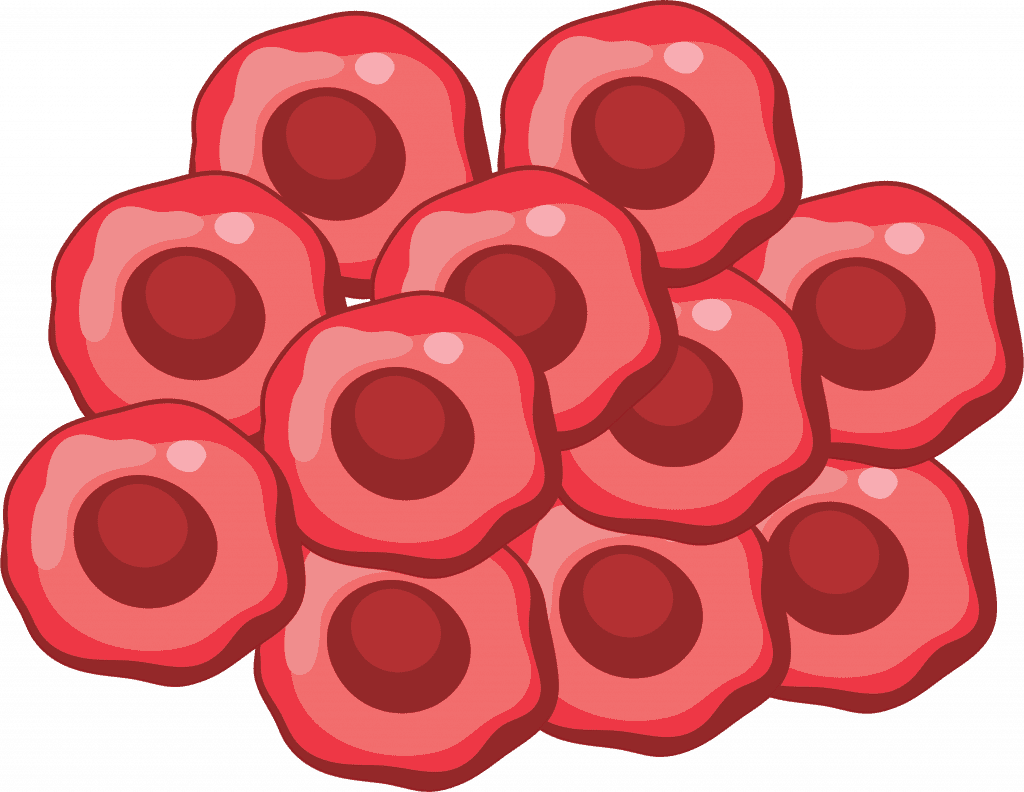JAK2 gene, VAL617Phe mutation, Qualitative.

JAK-2 is a genetic marker associated with pathological activation of division and maturation (differentiation) of myeloid progenitor cells.
The JAK2 V617F mutation is associated with myeloproliferative neoplasms (MPN). It is present in at least 95% of true polycythemia (IP) cases and is one of the main diagnostic criteria for this process.
WHO IS RECOMMENDED FOR THE JAK 2 ANALYSIS

The V617F mutation in the JAK2 gene is the most common in MPN. It is found in tumor cells in almost all patients with true polycythemia. More than half of patients with essential thrombocythemia and primary myelofibrosis also have this mutation.
A study for the V617F mutation in the JAK2 gene is necessary in all patients with suspected MPN.
It is also found in about 50% of cases of primary myelofibrosis (PMF) and in 40-50% of cases of essential thrombocythemia (ET).
WHAT THE RESULTS MEAN

Although a positive result (mutation detected) is consistent with MPF, it is not specific for this type, which requires correlation with other clinical, laboratory, and morphologic bone marrow data to make a definitive diagnosis. Most patients with IP, ET, and PMF other than JAK2 V617F may have mutations in the JAK2 12 exon, CALR, or MPL genes, and genetic testing is an important tool for classifying and diagnosing these diseases.
A negative result (no mutation detected) does not rule out MPN, but makes the diagnosis of IP unlikely. If the clinical picture of IP is characteristic and the test for the V617F JAK2 mutation is negative, additional tests can be performed to evaluate other mutations of exons 12 and 13 of JAK2, although these mutations are extremely rare. The detection limit of the method is 2% of cells containing the V617F mutation against a background of normal cells.
Samples whose results are very close to this detection limit are considered inconclusive and will be marked as INDEPENDENT, so retesting after 3-4 months will be recommended.
TEST LIMITATIONS
- This study detects only the V617F mutation in exon 14 of the JAK2 gene.
- Samples with a JAK2 V617F mutation below the sensitivity limit of the method will not be detected.
- This study is not designed to detect minimal residual disease.
- Leukopenia below 0.5x109 caused by hematological disease or medications (cytostatics) can affect the results.
Testing strategy for MPN
Standard practice for molecular evaluation of BCR-ABL1-negative MPNs:
- Evaluation of the JAK2 V617F variant.
- If the JAK2 V617F variant is not detected, CALR gene mutations and then MPL gene mutations are evaluated in patients with suspected ET or PMF.
- If the JAK2 V617F variant is not detected, but IP is still suspected, exon 12 of JAK2 is evaluated.
- If JAK2, MPL, and CALR mutations are not found in a patient with ET or PMF, consider testing for other mutations (myeloid malignancy mutation panel with next-generation sequencing, NGS).
Bibliography
- National Comprehensive Cancer Network. NCCN clinical practice guidelines in oncology: myeloproliferative neoplasms, Version 1.2020. [Last update: May 2020; Accessed: Mar 2021].
- NCCN Guidelines for Patients. Myeloproliferative Diseases, 2019.
- Jerald Z. Gong et al. Laboratory Practice Guidelines for Detecting and Reporting JAK2 and MPL Mutations in Myeloproliferative Neoplasms. A Report of the Association for Molecular Pathology // The Journal of Molecular Diagnostics, Vol. 15, No. 6, November 2013.

The interpretation of the results should be made by a specialist in conjunction with the history, clinical and other laboratory data. When interpreting the results, the varying sensitivity of the methods used for this study must be considered, since according to some literature data, the JAK2 V617F mutation can occur in clinically healthy individuals.
